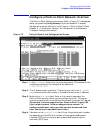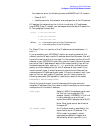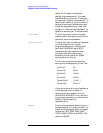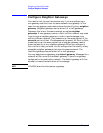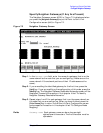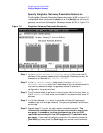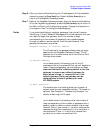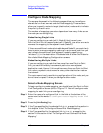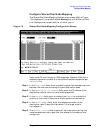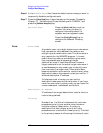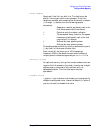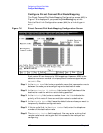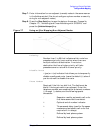
Chapter 7 117
Configuring a Point-to-Point Node
Configure Neighbor Gateways
Step 6. After you have finished entering the IP addresses of all the reachable
networks, press the
[Save Data] key. Press the [Prior Screen] key to
return to the Neighbor Gateways screen.
Step 7. Back at the Neighbor Gateways screen, after you have finished adding
all of the neighboring gateways, press the
[Prior Screen] key to return to
the Point-to-Point Link Configuration screen. Proceed to the section in
this chapter titled “To Configure Node Mapping.”
Fields If you have identified any neighbor gateways, then you will also be
identifying: 1) the IP Network Addresses of all of the networks that you
can reach through that gateway, and 2) the number of hops
(corresponding to the number of gateways) that a packet passes
through to reach a remote network from the local network. Two
gateway halves count as one hop.
Neighbor Gateway IP Internet Address
The IP address of the gateway whose name you have
specified on the Neighbor Gateways Screen. The IP
address is in the same format as on the Point-to-Point
Configuration screen.
IP Network Address
In the fields under this heading, you list the IP
addresses of all of the networks that you will be able to
reach through the gateway you are configuring. You
also use this field to indicate whether or not the
gateway is to serve as a default gateway by
entering an at sign (@) to specify that it is a
default gateway. Only one gateway can be
designated as a default gateway for each
HP e3000 system.
IP Mask (Optional)
The fields under this heading allow you to specify a
subnet mask for each reachable network. This mask is
optional. See Chapter 2 , “Networking Concepts,” for
details on deriving the IP mask.
Hops
In the fields under this heading, enter the number of
hops corresponding to the number of gateways that a
packet travels to reach a remote network from a local
network. Note: if you choose SD, no other nodes can be
accessed through the remote host; it is an end point in
the connection. Enter DC if the link is a leased line,
private line, or other non-switched link.



